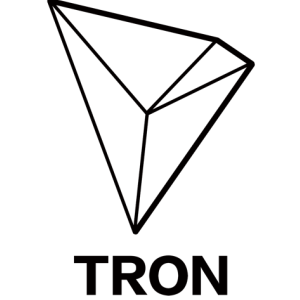TRON is a decentralized content sharing and digital entertainment platform that allows users to freely publish, store, and own data in an autonomous form. It was built by a team of Chinese developers who want to take on the global entertainment industry.
According to TRON’s whitepaper, the platform is “an attempt to heal the internet.” Its developers share Tim Berners-Lee’s opinion that the internet has deviated from its original goal of becoming a fully decentralized platform where anyone can create content and freely interact with others. The internet today is controlled by a few large corporations that make all the rules.
As a decentralized platform and distributed storage technology, TRON’s goal is to allow content creators to cut out the middlemen and obtain funds directly from consumers. Under the current model, user data and traffic is controlled by giant corporations like Google, Amazon, Facebook, etc. TRON wants to mitigate this control by returning ownership back to the content creators.
TRON Pricing, Market Cap and Volume
TRX was launched with an ICO period lasted for most of August 2017 before it was officially released to the public in September 2017. There is a maximum available supply of 100 billion TRX. It can’t be mined.
As of December 2017, there were 65.74 billion tokens in circulation. In just three months, its market cap has reached $2.4 billion USD. The TRON Foundation announced on December 18th, 2017 that it is locking up 34.25 billion tokens until January 1st, 2020. Speculators believe locking up the tokens will increase their value.
TRON’s Native Currency: Tronix (TRX)
TRON has its own currency called Tronix (abbreviated TRX) that the platform will use to create a functional economic ecosystem. While TRON will eventually support different types of cryptocurrencies, TRX will be used for the conversion and circulation of currencies within the network. TRX combines the transactional capabilities of Bitcoin and the functionality of Ethereum.
How TRON Works
TRON’s protocol has native economic system that uses TRX to enable one-on-one interaction between content creators and their audience. By using TRON, content creators will no longer need to pay high fees to centralized channels.
In addition to providing a free platform for sharing content, TRON also wants to provide users with a social network that connects people, a digital currency (TRX) for transactions, a payment network, and an autonomous ecosystem. TRON plans to achieve these goals in six phases starting in 2017 and ending in 2023. Below are the key features of each phase:
Exodus – a free platform for peer-to-peer distribution and storage. It includes a mechanism of upload, storage, and distribution. TRON will provide users with a completely free and reliable platform for data publication, storage, and dissemination.
Odyssey – this stage attempts to incentivize the early adoption and creation of content on the platform using a system similar to a proof-of-stake model.
Apollo – content creators can issue their own tokens and offer a stake in a potential brand through ICOs.
Star Trek – TRON will launch a decentralized gaming and forecasting platform similar to Augur where anyone can freely build fully autonomous games and predict market functions.
Eternity – in addition to setting up games on TRON, developers will also be able to crowdfund game development and find investors on the platform to contribute to game content creation.
TRON vs. Other Cryptocurrencies
TRON’s core mission is what sets it apart from other cryptocurrencies. It wants to revolutionize the global digital entertainment system by making it easier for content creators to reach a global audience. Right now, if someone in Japan wanted to buy a record from an Iranian artist, it will be up to them to reach out to Iranian artist’s label and order and pay for the music they want.
TRON simplifies the entire process by providing a decentralized platform the Iranian artist and the Japanese fan can use to get in touch, and TRX solves the problem of global payments by allowing point-to-point transactions. TRON’s key features include:
Data liberation – content creators must retain fundamental ownership of their data and the internet should be decentralized.
Point-to-point transactions – users and content creators can avoid centralized payment processors by using TRX.
Blockchain flexibility – in an effort to enhance its utility and liquidity, TRON supports several blockchain networks, including Ethereum, Bitcoin, Qtum, and EOS.
Gaming currency exchange – TRON will allow gaming companies to issue game-specific currencies that can be freely traded with other game publishers via TRON protocols.
Trust in gambling – TRON wants to add to the online gambling industry by creating a cross-platform system that provides authentication without going through centralized channels.
Buying and Storing TRON
TRX can be acquired from many major cryptocurrencu exchanges, including Binance, HitBTC, Liqui, Gatecoin, EtherDelta, Bit-Z, Qryptos, and CoolCoin. Binance is considered one of the best choices for acquiring TRX because of their low trading fees.
TRX is an ERC20 token, which means it can be stored on any wallet that can hold Ethereum tokens. MyEtherWallet, Mist, Metamask, and Exodus are all good choices. If you want a more secure option for the long-term storage of TRX, hardware wallets like the Ledger Nano S are your best bet.
Liquidity of TRON (TRX)
TRX is still a relatively new token, but its value has risen from $0.002 at its release in September 2017 to roughly $0.038 on December 27, 2017. That’s an approximately 1900% increase in just three months, which shows a lot of promise.
TRON also has the backing of several influential members of the Chinese business community and a strong development team with a clear, long-term vision for TRX and the platform. It’s not unreasonable to feel optimistic about the project, but as with any crypto asset, invest with caution and only after performing thorough research.






